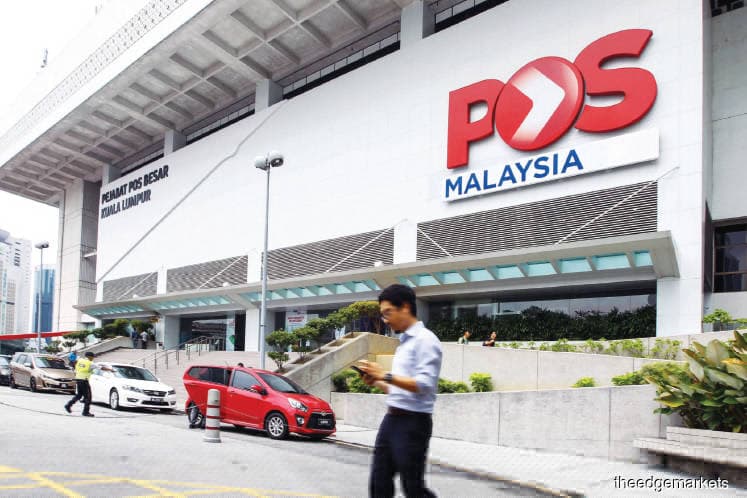
This article first appeared in The Edge Financial Daily on March 6, 2020
Pos Malaysia Bhd
(March 5, RM1.10)
Maintain hold with a fair value of RM1.21: Pos Malaysia Bhd guided for a revenue increment of RM10-15 million per month driven by tariff revision effective February 2020, assuming a 26% decline in mail volume, which is fairly consistent with our assumption of a 20- 23% decline in mail volume in the financial year 2020 forecast (FY20F). The company believes the higher revenue should stop the bleeding in the mail segment in FY20F (versus our projection of a small loss still due to the continued cost escalation).
SendParcel (an online shipping portal that allows easier access to Pos Laju services for small and medium enterprises) was launched in August 2019 — with additional services to be added in 2020 — and more automated/semi-automated sorting machines to be installed at its distribution centres in FY20. The new or upgraded automated sorting system is expected to process 60% more parcels per hour, and one to two hours saved per day.
On the other hand, Pos Malaysia will continue to contain its costs by rationalising its post office network (potential relocation, right-sizing or closure, or transform into e-commerce fulfilment centre). An entrepreneurship/crowdsourcing programme (which converts a salaried mail delivery person to a volume/incentive-based mail delivery “contractor”) should reduce the cost per item delivered by 28%, while increasing items delivered per day by 50%. The pilot programme was rolled out in FY19, with more than 100 riders recruited to date. Pos Malaysia hopes to increase the number of riders to 1,000 for FY20F.
Meanwhile, the company continues to pursue divestment/monetisation of its non-core aviation engineering and Ah-Rahnu businesses, and plough back the proceeds into its core courier and postal segments to improve efficiencies and competitiveness.
We believe the main challenge for Pos Malaysia is its cost inefficiency due to a unionised workforce and its inability to significantly rationalise its extensive network of post offices. Despite the cost-containment measures implemented in FY19, the operating costs still remain high. This was due to higher costs incurred at the beginning stage of the transformation plans. Furthermore, some initiatives are still at an early stage and have yet to be able to show their full impact.
The courier segment continues to face intense competition, resulting in margin squeeze. But at the current share price and valuations, we believe the market has priced in the bad news. — AmInvestment Bank, March 5